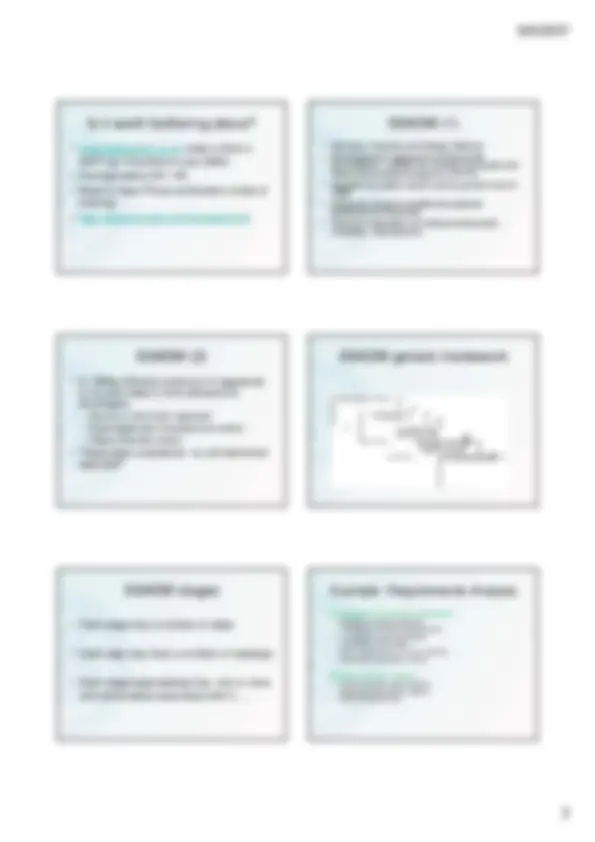





Study with the several resources on Docsity

Earn points by helping other students or get them with a premium plan


Prepare for your exams
Study with the several resources on Docsity

Earn points to download
Earn points by helping other students or get them with a premium plan
Community
Ask the community for help and clear up your study doubts
Discover the best universities in your country according to Docsity users
Free resources
Download our free guides on studying techniques, anxiety management strategies, and thesis advice from Docsity tutors
An overview of development approaches in information systems engineering, using the analogy of cooking and recipes. It discusses the importance of having a framework within which to structure a project, and introduces several well-known methodologies such as prince2, ssadm, dsdm, and rup. The document also touches upon the future trends in development approaches.
Typology: Lecture notes
1 / 7

This page cannot be seen from the preview
Don't miss anything!




Key features of Prince2 described as:
Business Study
Feasibility
Functional Model iteration Implementation
Design & builditeration